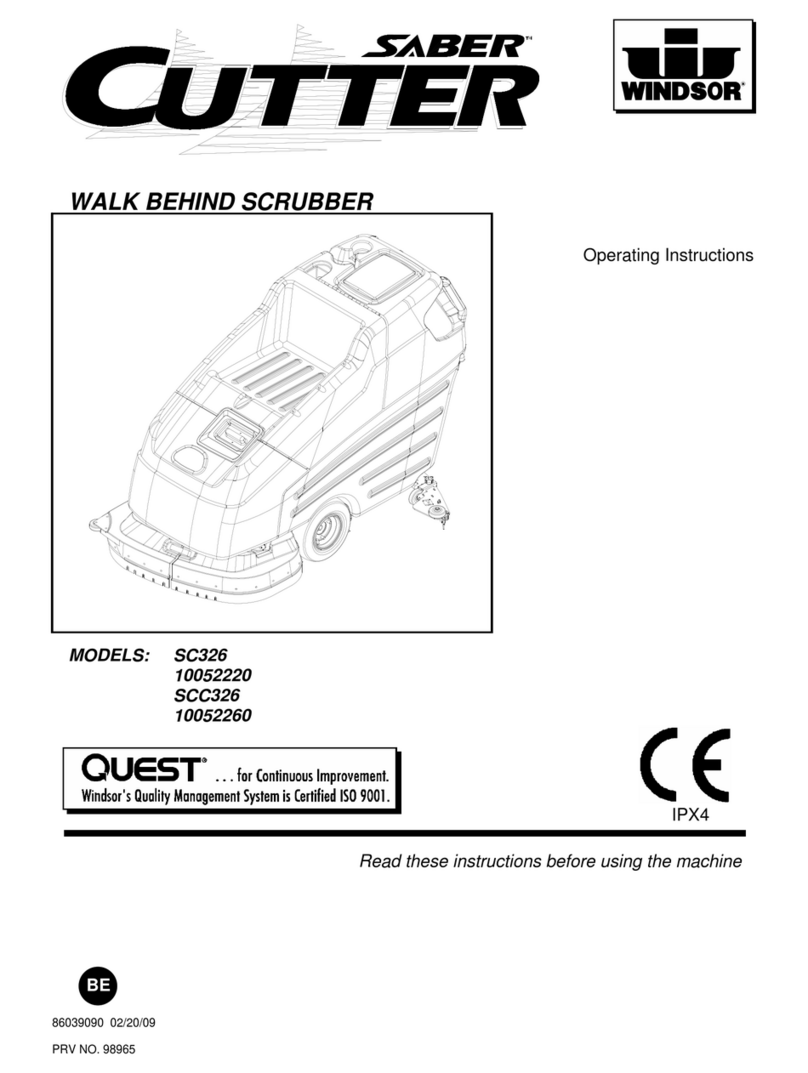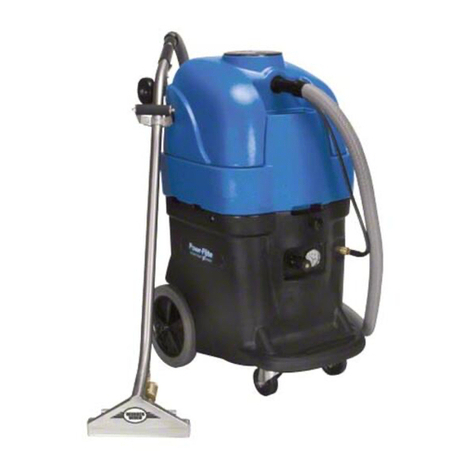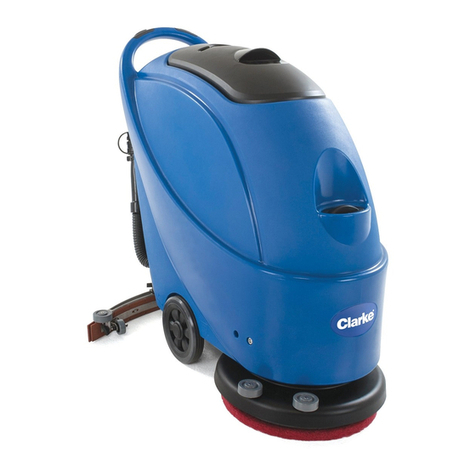2
Anyone operating the machine should read the
following carefully and be informed of potentially
dangerous operating conditions. Operators should be
familiar with the location and use of all safety devices
on the machine. Do not use the machine if it is not in
proper operating condition, and report any damage or
operation faults immediately.
DANGER! Operate this machine only in a well-ventilated
area. It is the responsibility of the machine operator,
machine owner, and site manager to ensure that the air
exchange system where the machine is to be used is in
compliance with local building codes and is operating
properly. Failure to operate this machine in a well-
ventilated area could lead to sickness, injury or death
from carbon monoxide (CO) exposure.
DANGER! This machine emits CO which is a colorless,
odorless, non-irritating gas. The first symptoms of CO
exposure include headache, drowsiness, dizziness and
nausea. If you should experience any of these
symptoms while operating this machine, shut off the
machine and go outside to get fresh air. Have the
machine tested for CO emissions by a qualified service
technician before using it again.
DANGER! Prolonged or high exposure to CO may result
in vomiting, confusion, and collapse in addition to loss
of consciousness and muscle weakness. If such
symptoms occur, call 911 for emergency medical
attention. If you have experienced these symptoms, do
not operate this machine or any other propane machine
again until cleared by a physician. Excessive exposure
to CO can result in death.
DANGER! Propane is a highly flammable fuel. If you
smell propane, shut off the machine immediately and
take it outside the building. Do not use the machine
again until the propane leak has been corrected by a
qualified service technician. Do not use or allow
another person to use an ignition source such as a
cigarette lighter near the propane machine. Do not
smoke near the propane machine. Do not vent a
propane cylinder inside a building. Do not store
propane cylinders inside a building.
DANGER! This machine has parts including the
pad/brush assemblies that can cause severe injury if
these parts are contacted while they are moving. Do
not allow any part of the body or clothing to come in
contact with these parts while they are moving. Do not
try to change the pads/brushes while the machine is
running. Do not allow other people to come near the
machine while it is in operation. Do not allow the
machine to run unattended. Do not leave the machine
in a place where unauthorized or untrained personnel
could use the machine. Do not run the machine with
the pads/brushes off center, damaged or missing. Do
not operate the machine if the machine has loose parts.
WARNING! Modifications or alterations to this machine
can lead to personal injury or damage to the machine.
Do not make unauthorized modifications or alterations
to this machine. Amano Pioneer Eclipse assumes no
liabilities for injury or damage resulting from an
unauthorized modification or alteration to the machine.
Any unauthorized modification or alteration to this
machine voids all warranties.
WARNING! The muffler and the engine become hot
enough while the machine is in operation, and for a
long time after the machine is shut off, to cause severe
burns. Do not touch these parts of the machine until
they have cooled.
WARNING! Injury can occur to the eyes and body while
using the machine. Safety goggles, safety shoes, and
safety clothing are recommended while operating the
machine.
WARNING! Continuous exposure to high noise levels can
cause hearing loss. Hearing protection is
recommended while the machine is in operation.
WARNING! Machine vibration may cause tingling or
numbness in the fingers or hands. Gloves are
recommended to reduce machine vibration. If tingling
or numbness persists, shut off the machine. If the
vibration is caused by loose parts such as an off center
pad/brush, adjust or tighten these parts before using
the machine again.
WARNING! Flammable materials can cause an explosion
or fire. Do not use flammable materials in tanks.
WARNING! Flammable materials or reactive metals can
cause an explosion or fire. Do not pick up.
CAUTION! Overfilled cylinders can damage fuel
regulators. Do not overfill the cylinder. If the regulator
freezes, stop the burnisher and carry the propane
cylinder outside the building.
CAUTION! Overheating can be caused by a dirty engine
filter.
CAUTION! Overheating can be caused by insufficient or
low oil. Check oil before each use, and fill or change as
needed.
CAUTION! Never over-fill with oil. Over-filling could cause
irreparable damage to the engine.
CAUTION! Overheating can be caused by dirty oil. Check
oil before each use and change regularly following
recommended maintenance schedule.
CAUTION! Do not engage starter for more than 10
seconds. Allow a 60 second cool-down period for
second failed start-up attempt.
CAUTION! Perform all recommended scheduled
maintenance. Regular maintenance of your propane
powered floor machine is necessary to keep it in safe
working condition.
Safety Precautions



























